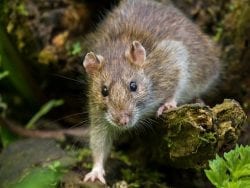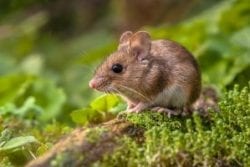Rodent Profiles: Mice and Rats

Introduced rodent species are highly adaptable, making the most out of a harsh Australian climate without missing a beat. At Canberra Pest Control, we target four types of rodents, responsible for much of the disease and destruction detailed on our mice and rat pages. While the land down under does have its own native mice and rat species, most of these are protected. Make sure you’re not killing an Aussie-born hopping mouse and contact Canberra Pest Control at the first sign of rodent activity – basic mice nesting habits can transform a small thriving rodent unit into a army over a matter of weeks!
Rat Profiles
Black Rat

(Rattus rattus)
Appearance: The black rat is smaller than its brown cousin, sporting a pointy nose and a long tail – you may find the tail is longer than both the head and body. They’re quite slender, squeezing into tight spaces with ease.
Size: The black rat can reach up to 24cm long and weigh up to 200g.
Lifecycle: A black rat reaches maturity at 16 weeks, going on to produce up to 6 litters per year with around 5-10 rats per litter. That’s up to 60 babies in 12 months for one rat!
Food: Black rats enjoy moist, delicious fruit and veg, eating around 15g per day.
Brown Rat

(Rattus norvegicus)
Appearance: The brown rat is a chunky bugger with a stout tail, a flattened nose and a longer body. They can get quite big on the right diet!
Size: The brown rat can reach up to 40cm long and weigh up to 500g!
Lifecycle: A brown rat reaches maturity at 12 weeks old, going on to borne up to 6 litters annually, with 8 babies per litter. Not quite as prolific as their black pelted friends, they can still pump up their numbers to reach infestation levels quickly.
Food: Brown rats are omnivores, snacking on whatever is available. Although they particularly like cereals and grains.
Rodent 101: How long can mice go without food?
Rats and mice can survive an empty belly for up to 4 days, and even longer without water, as they consume enough moisture from morsels of food they find on your benchtops.
Mice Profiles
Field Mouse

(Apodemus sylvaticus)
Appearance: Field mice have a multi-coloured coat, including yellow fur on the flanks, a chest stripe and white fur on the stomach. Their small size means they can get into impossible cracks easily with minimal signs of their passage.
Size: House mice can measure up to 95mm long with a max weight of 20g for females and 25g for males.
Lifecycle: Field mice breed in great numbers, living anywhere between 3 to 20 months in the wild and around 2 years in captivity, Male field mice become aggressive toward younglings during breeding season, driving the newly weaned babies out into the elements at 18 days old, 2 days after opening their eyes for the first time and 12 days after their first fur sprouts.
Food: Grain crops suffer greatly from the presence of field mice, as they love to chow down on oak, beech, ash, lime, hawthorn and sycamore seeds. They’ll also eat small insects and snails in late spring, legume seeds and even apples for a sweet fix.
House Mouse

(Mus domesticus)
Appearance: House mice are often mistaken for young brown rats thanks to their long tails and brown fur. Keep an eye out for small feet, large eyes and a dainty head for a positive identification.
Size: House mice can measure up to 95mm long with a max weight of 30g.
Lifecycle: House mice only need 12 weeks to reach sexual maturity from birth, gestating for around three weeks. Once grown, they can have up to 8 litters annually with a maximum of 16 young. Imagine the breeding capability of two mice in one house!
Food: House mice can survive on as little as 3g of food a day thanks to their small size – they prefer the taste of cereals and grains.We’re driven by our mission to rid your home of rodents, pests and insects. Don’t give in to infestation – contact Canberra Pest Control today and book a rodent control assessment today.